![]()
![]()
![]()
Use LEFT and RIGHT arrow keys to navigate between flashcards;
Use UP and DOWN arrow keys to flip the card;
H to show hint;
A reads text to speech;
21 Cards in this Set
- Front
- Back
- 3rd side (hint)
|
PLANES |
- the surface on which the movement occurs
1. sagittal 2. frontal 3. transverse |
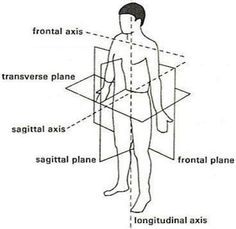
|
|
|
AXES |
- the line around which the movement occurs 1. longitudinal axis 2. sagittal (AP) axis 3. frontal axis |
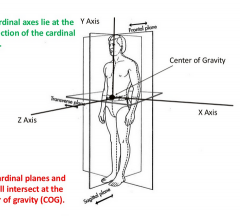
|
|
|
1. SAGITTAL PLANE |
- vertical plane - divides body into right & left halves * forward & backward movements |
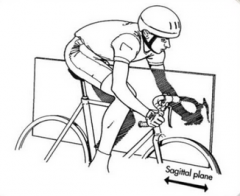
right & left halves |
|
|
2. FRONTAL PLANE |
- vertical plane - divides body into front & back halves * sideward & vertical movements |
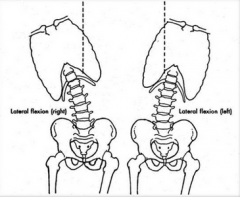
dorsal/ventral = back/front |
|
|
3. TRANSVERSE PLANE |
- horizontal plane - divides body into top & bottom halves * horizontal & rotational movements |
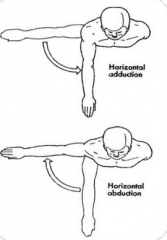
superior/inferior = top/bottom |
|
|
1. LONGITUDINAL AXIS (Y) |
- passes from top to bottom - rotation in transverse plane occurs around longitudinal axis |
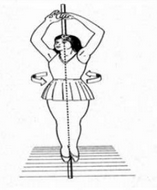
|
|
|
2. SAGITTAL (AP) AXIS (Z) |
- passes from front to back - rotation in frontal plane occurs around sagittal axis |
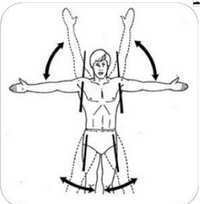
|
|
|
3. FRONTAL AXIS (X) |
- passes from side to side - rotation in sagittal plane occurs around frontal axis |

|
|
|
DIRECTIONAL TERMS |
1. superior/inferior 2. anterior/posterior 3. medial/lateral 4. proximal/distal 5. superficial/deep |
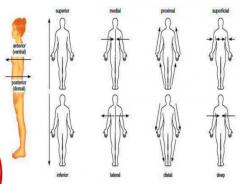
|
|
|
1. SUPERIOR & INFERIOR |
SUPERIOR: - directed upwards - towards head INFERIOR: - directed downwards - towards feet |
|
|
|
2. ANTERIOR & POSTERIOR |
ANTERIOR: - directed towards front of body POSTERIOR: - directed towards back of body |
|
|
|
3. MEDIAL & LATERAL |
MEDIAL: - nearer midline of body LATERAL: - farther from midline of body |
|
|
|
4. PROXIMAL & DISTAL |
PROXIMAL: - closest to point of attachment/origin DISTAL: - away from origin |
|
|
|
5. SUPERFICIAL & DEEP |
SUPERFICIAL: - near surface DEEP: - away from surface |
|
|
|
MOVEMENTS |
1. inversion/eversion 2. dorsiflexion/plantarflexion 3. internal/external rotation 4. abduction/adduction 5. varus/valgus |
|
|
|
1. INVERSION & EVERSION |
occurs in the frontal plane about the longitudinal axis. INVERSION: - sole of foot faces inward toward medial aspect of body EVERSION: - sole of foot faces outward towards lateral aspect of body |
|
|
|
2. DORSIFLEXION & PLANTARFLEXION |
occurs in the sagittal plane about the frontal axis DORSIFLEXION: PLANTARFLEXION: |
|
|
|
3. INTERNAL & EXTERNAL ROTATION |
occurs in the transverse plane about the longitudinal axis INTERNAL ROTATION: EXTERNAL ROTATION: |
|
|
|
4. ABDUCTION & ADDUCTION |
|
|
|
|
5. VARUS & VALGUS |
occurs in the frontal plane about the sagittal axis. VARUS: - distal aspect of lower leg moves toward medial aspect of body VALGUS: - distal aspect of lower leg moves toward lateral aspect of body |
|
|
|
MUSCLES act @ knee joint to flex, extend, and rotate knee... |
extensors: - quads (rectus femoris, vastus sisters) - tensor fasciae latae flexors: - hamstrings (biceps fem, semiten, semimem - gracilis - sartorious internal rotators: - semimem - pes anserinus (semiten, gracilis, sartor) external rotators: - biceps fem |
|

